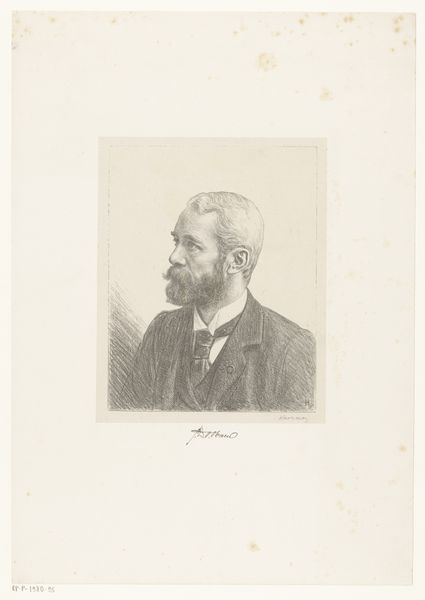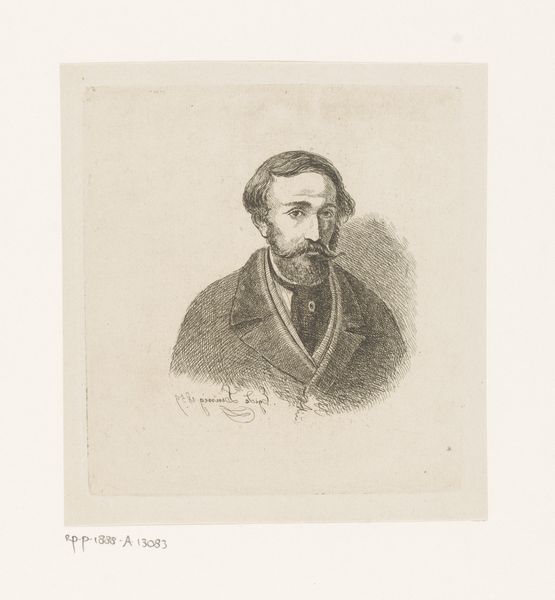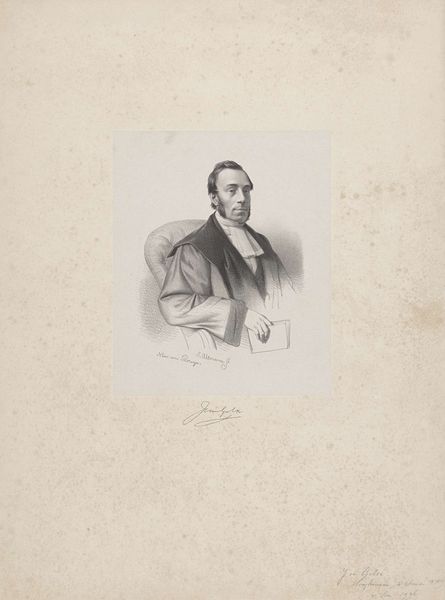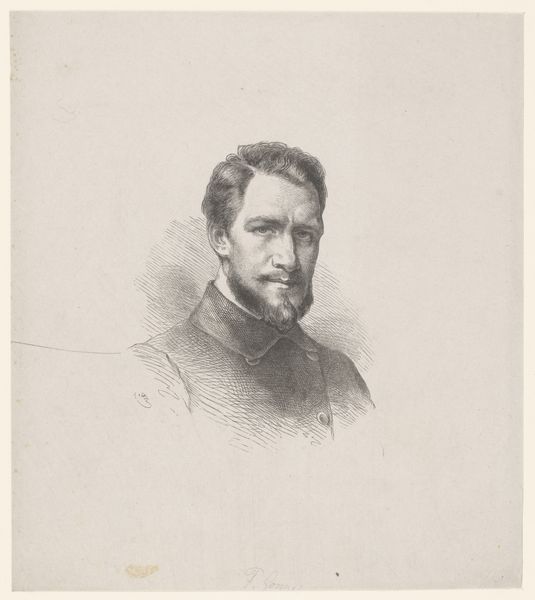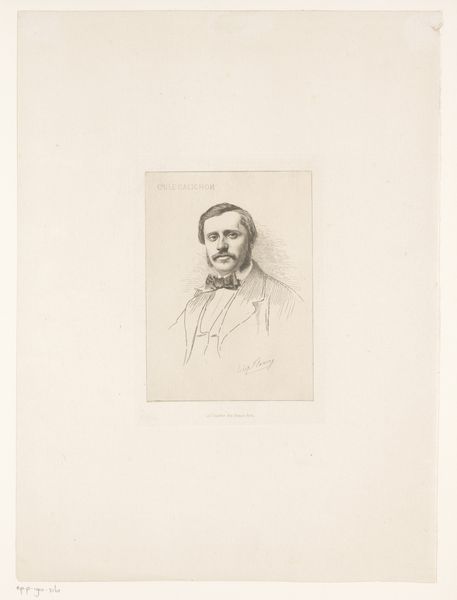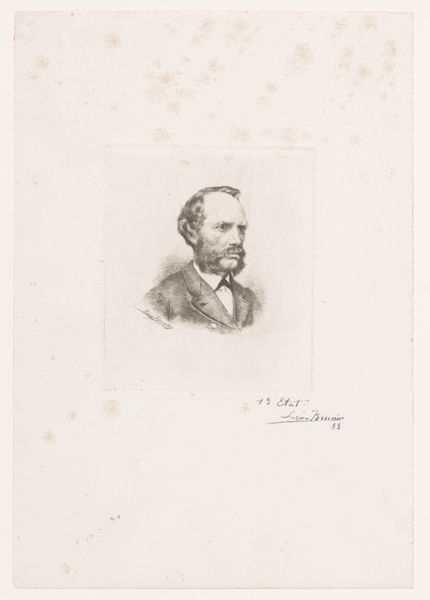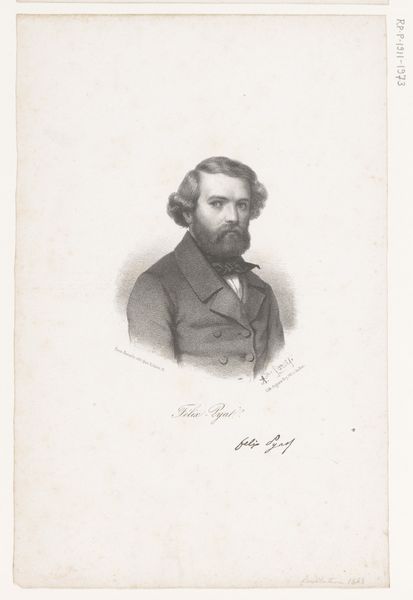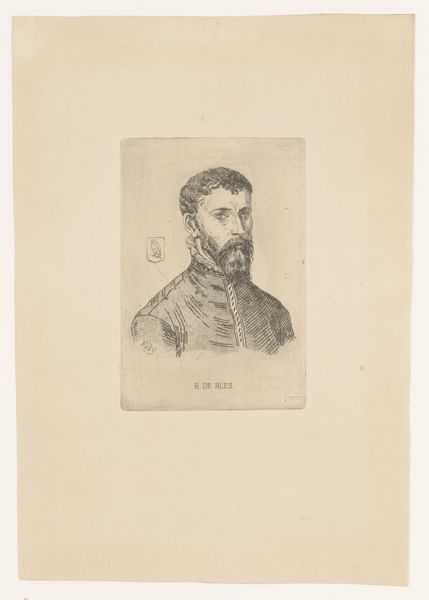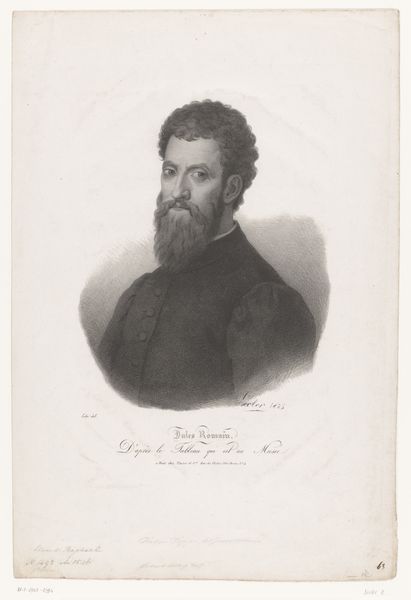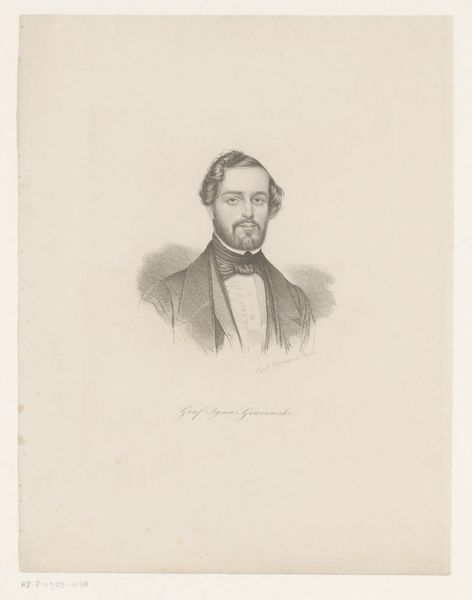
print, engraving
#
portrait
# print
#
old engraving style
#
personal sketchbook
#
engraving
#
realism
Dimensions: height 211 mm, width 139 mm
Copyright: Rijks Museum: Open Domain
Editor: Here we have Eduard Eichens' "Portret van Franz van Gaudy op 38-jarige leeftijd," made between 1838 and 1877. It's an engraving. I am really struck by the intensity of the gaze – the detail achieved with just line work is incredible. What stands out to you in this piece? Curator: Well, given its historical context, prints like this portrait served a crucial public function. Think about the limited availability of photography at the time. Engravings like these were the primary means of disseminating images of prominent individuals, shaping public perception. This image wasn't just a likeness, it contributed to the subject’s public persona. Editor: So it's a kind of political image making? How would a print like this one be "political?" Curator: Absolutely. How do you think it was circulated? By wealthy patrons and elites for widespread dissemination, cementing Gaudy's status within a specific social and political sphere. Notice how the style emphasizes his respectability through classic conventions of portraiture? The realism aimed for trustworthiness, to reinforce a certain ideology linked to the person being represented and the commissioner. Editor: I see, so the print functions to project the patron’s or the sitter's intended message in society. And it was a way of reaching a broad audience. Curator: Precisely! The museum acquiring and displaying it now also has a political effect – celebrating Gaudy within our own contemporary cultural value system. Do you think its position in the Rijksmuseum contributes to an established narrative? Editor: That's a great point, it reframes the piece! It prompts reflection on who we choose to remember, and why. Curator: Indeed, these images hold so much power. The story and use don't just stop when it comes off the press.
Comments
No comments
Be the first to comment and join the conversation on the ultimate creative platform.

